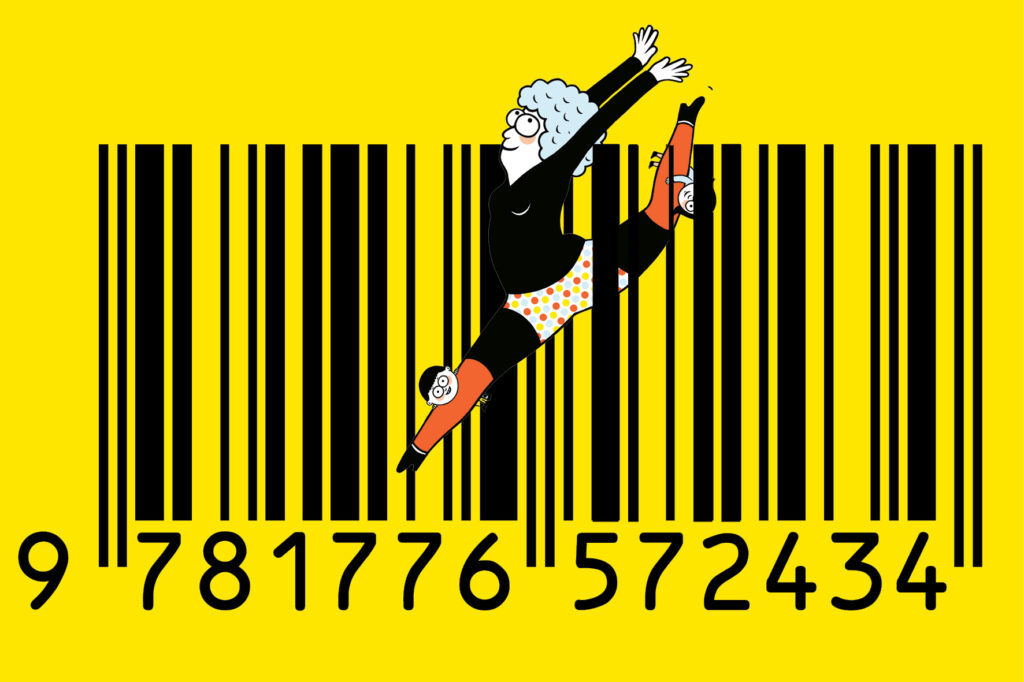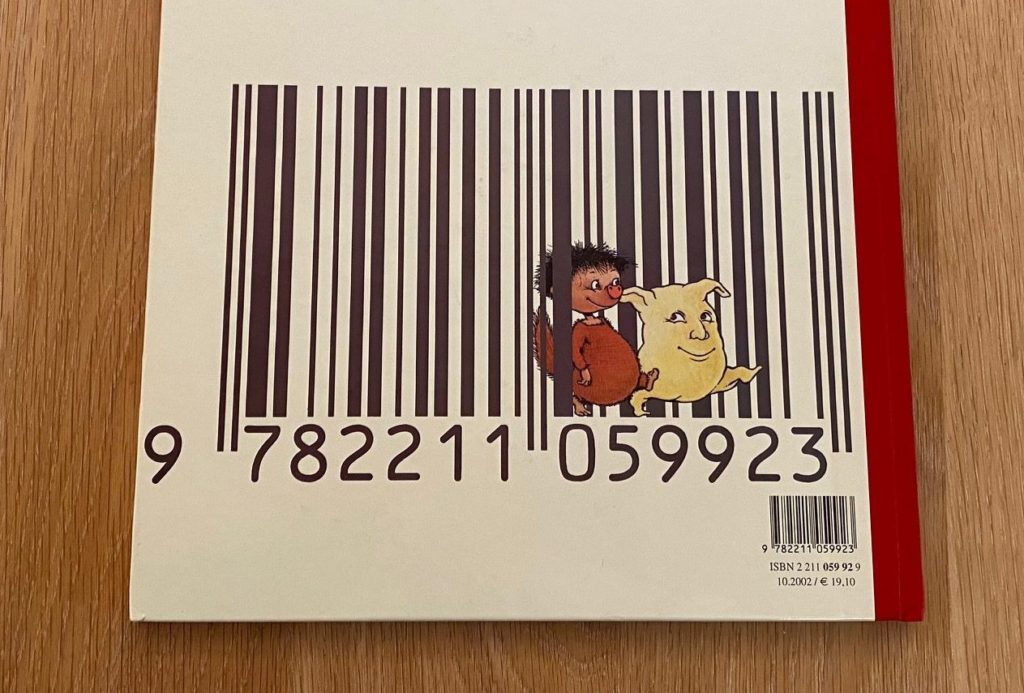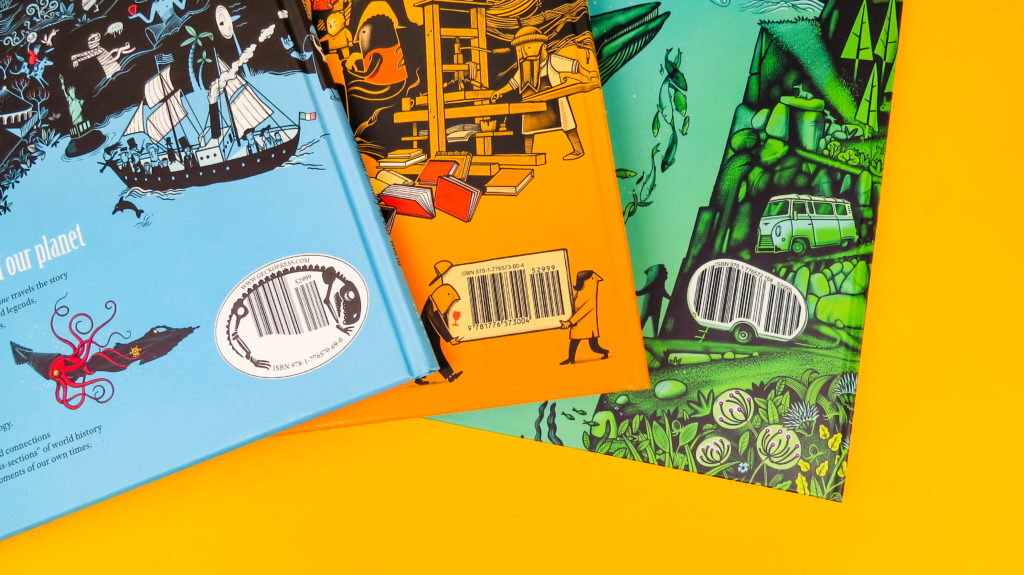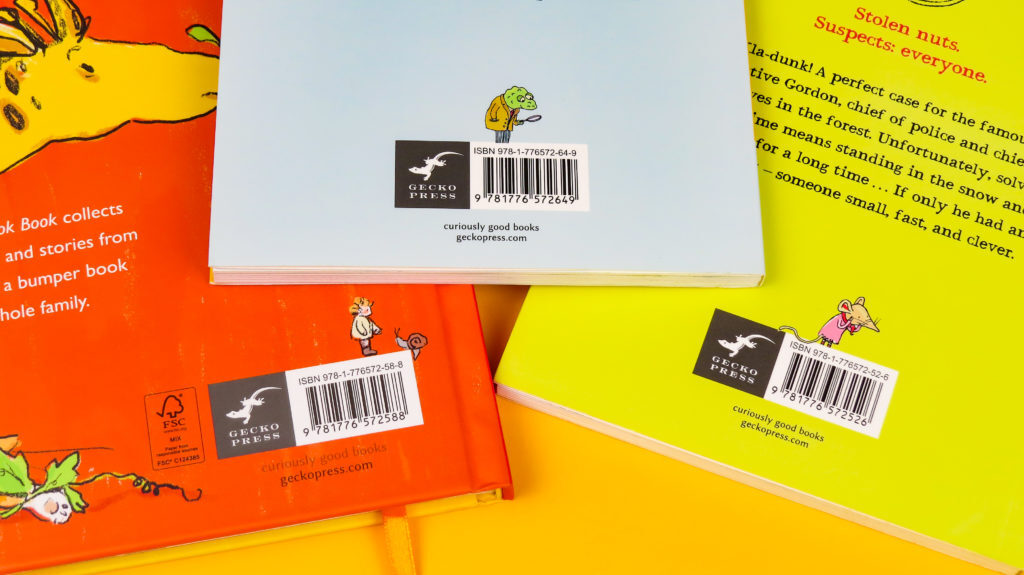by rachel lawson

There’s a bookshelf behind Julia’s desk at Gecko Press that miraculously houses examples of whatever we need whenever we need it. These are books we have loved but never published in English, for one reason or another. Julia often reaches in, mid conversation, to pull out exactly the book we need to look at.
The other day out came Claude Ponti’s Le Doudou Méchant with its very pleasing full-cover barcode, with a little boy Oups and his doudou striding out between the bars. The sight of it lifted our day. And got us talking about barcodes.

My approach to book design tries to honour the many hundreds of years through which conventions have developed. (I had a mentor years ago who used to say “books have rules that make life better”—with the implication that I should break them at my peril.) The “rules” of book design were created so reading would come first. Content takes precedence, and when the form or design distract from content, they’re getting a little above themselves. This has been my thinking about barcodes—don’t give form precedence over function; barcodes are invisible to most people, just let them do their job.
A barcode’s job is of course to allow a book to be easily bought, with the money that changes hands travelling through a lovely virtuous chain back to its creators. Occasionally designers try to slip barcodes inside back cover flaps or disguise them in other ingenious ways, but that only makes booksellers’ lives harder: why would we do that?
But little Oups reminded me that a clever barcode can be great fun. Peter Goes has created lovely—but still functional—barcodes on his books Timeline, Timeline Science and Technology and Rivers. The bars nestle as ribs inside an ancient fossil, are housed inside a delivery carton, and decorate a caravan parked on the side of a hill.

We’ve had occasional fun with a barcode with some recent Gecko Press designs. Who couldn’t be charmed by Buffy and Detective Gordon perched on their barcodes in the Detective Gordon series—these two designed by Katrina Duncan – or the tiny woman helping her pet snail up the side of the barcode on The Gobbledegook Book, the idea of designer Vida Kelly.

Details like this bring a little spark to a careful looker. So although publishers, like bushwalkers, try to leave no trace, I’ve come around to thinking we don’t need to be so serious about function that we can’t leave a smile for our readers. I’ll now be actively encouraging illustrators and designers to enjoy the barcodes too.
Publishers spend our days poring over details through every book that are often especially designed for readers to not notice where we’ve been. But a playful barcode shows that someone paid extra attention right there, in a place we didn’t expect it. The reader who observes this might feel they can trust us to have looked just as carefully everywhere else we could manage it. It’s a small sign to show we are trying very hard to make each book the best it can be.
Do you want to hear more from Gecko Press? Every month we send out a newsletter with all of our latest blog articles, book lists, activity sheets, and sometimes a competition too! Sign up to our mailing list here.

